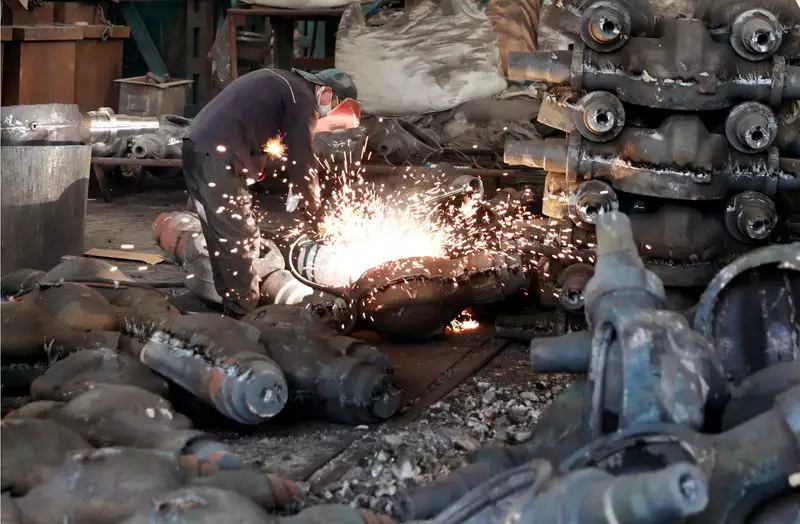China’s manufacturing activity experienced a decline for the second consecutive month in June, according to an official survey. The National Bureau of Statistics (NBS) reported that the purchasing managers’ index (PMI) stood at 49.5 in June, unchanged from the previous month. This figure remains below the critical 50-mark, indicating a contraction in the manufacturing sector. While some analysts believe that the official PMI may not accurately reflect the current export momentum, it is clear that both external and domestic demand are insufficient to absorb China’s manufacturing capacity.
The weakening manufacturing activity in China is compounded by the ongoing trade tensions between Beijing and Western economies. Although China’s exports exceeded expectations in May, the sustainability of export sales remains uncertain. Additionally, a lingering property crisis continues to weigh on domestic demand, as consumers remain cautious and holiday boosts are short-lived. The non-manufacturing PMI, which includes services and construction, also declined in June, pointing to overall economic challenges facing China.
Analysts anticipate that the Chinese government will introduce further policy support measures to stimulate the economy. While monetary policy easing may be limited due to currency pressures, fiscal stimulus is expected to take precedence in boosting domestic consumption. Premier Li Qiang highlighted the importance of new industries in driving economic growth and expressed optimism about the steady improvement of China’s economy in the second quarter of the year.
Despite government efforts to spur growth, concerns persist regarding high local-government debt and deflationary pressures. The effectiveness of measures implemented since last October remains uncertain, leading to subdued expectations among investors and factory owners. China’s central bank recently announced initiatives to address the housing market and reduce reliance on the property sector, signaling a shift towards new growth engines.
The upcoming Third Plenum scheduled for July 15-18 will bring together top Communist Party officials in Beijing to discuss economic priorities for the next five years. The outcomes of this meeting are crucial for setting the course of China’s economic development and addressing the challenges facing the manufacturing and broader economy. Economists and investors will closely monitor the decisions and policies announced during the Third Plenum to gauge the future trajectory of China’s economy.
China’s manufacturing activity serves as a key indicator of the country’s economic health and its impact on the global economy. Despite the challenges faced, including trade tensions and domestic pressures, the Chinese government’s policy responses and strategic initiatives will play a crucial role in shaping the economic outlook. The upcoming Third Plenum represents a significant opportunity to address these challenges and pave the way for sustainable growth and development in China.

